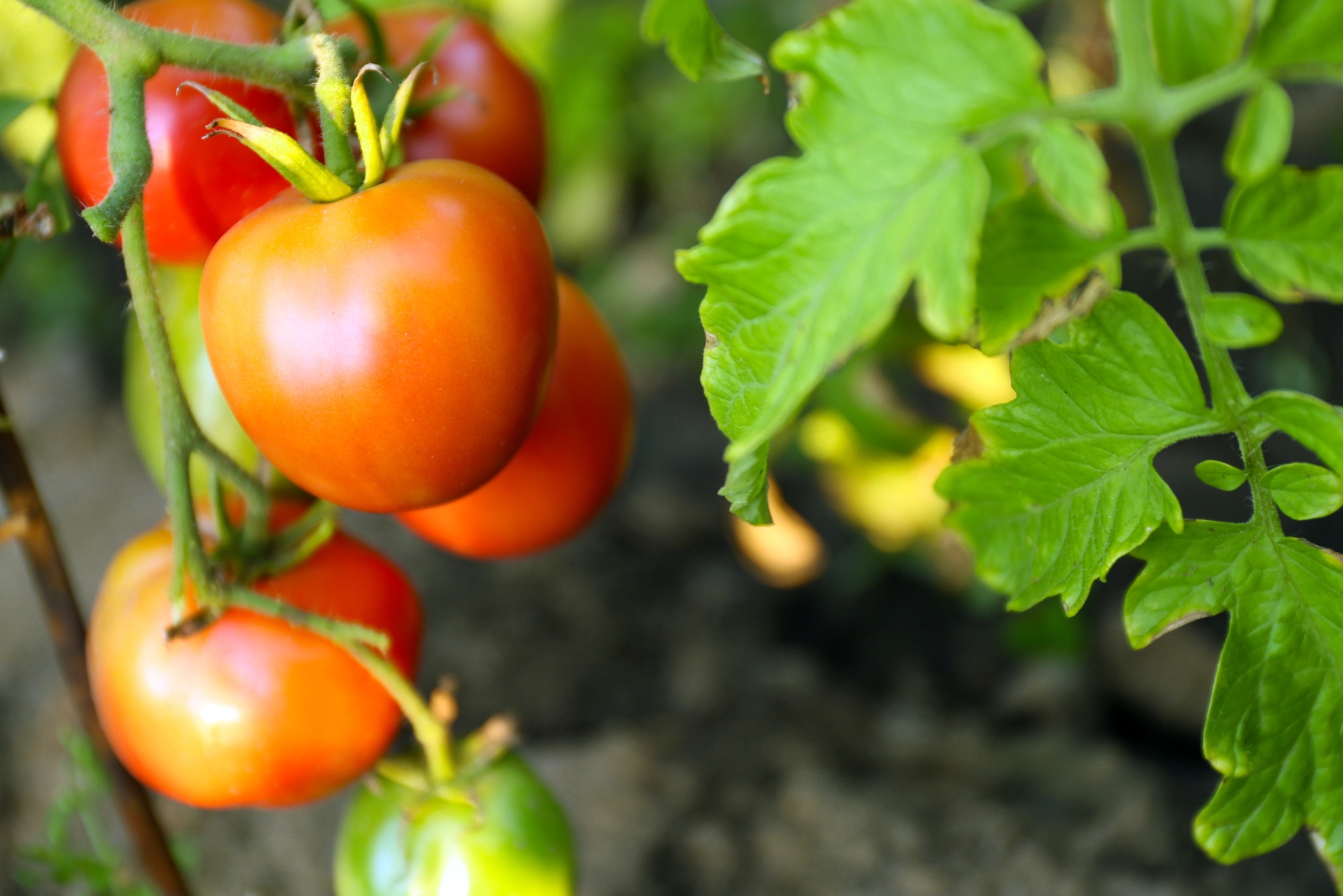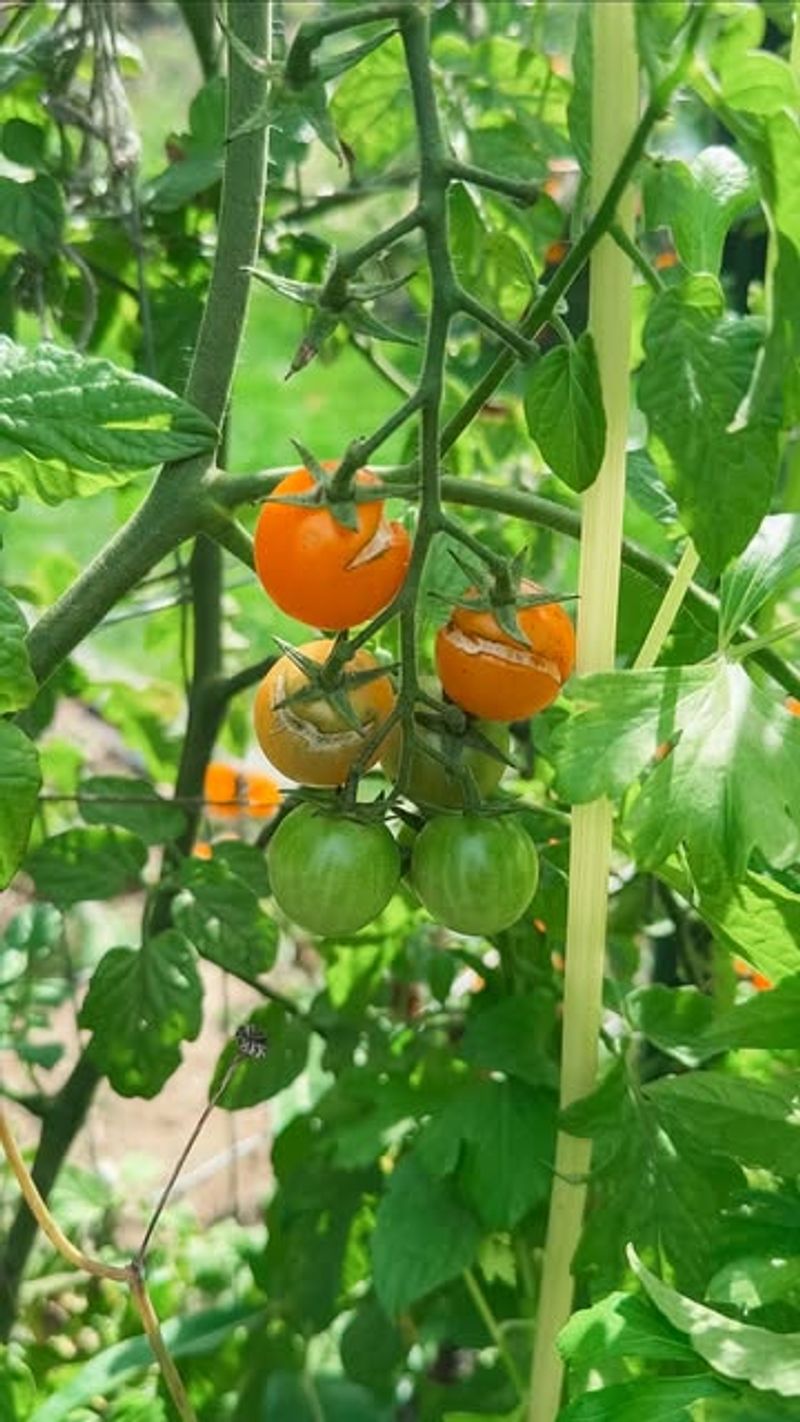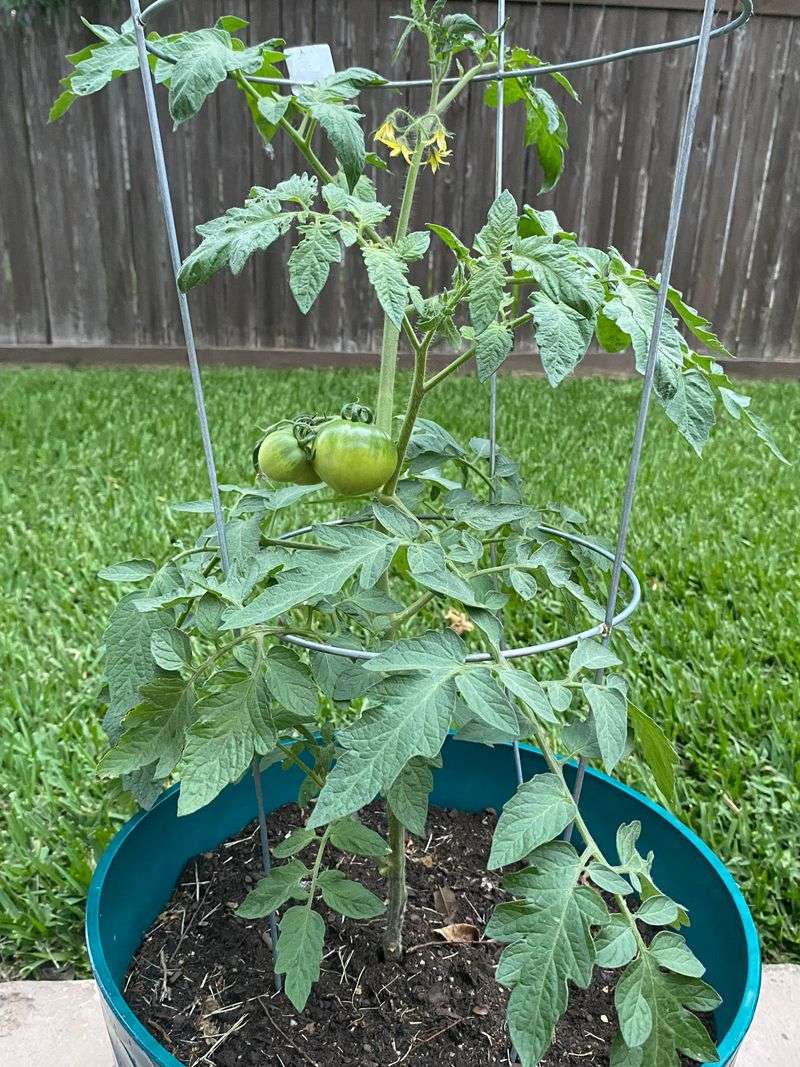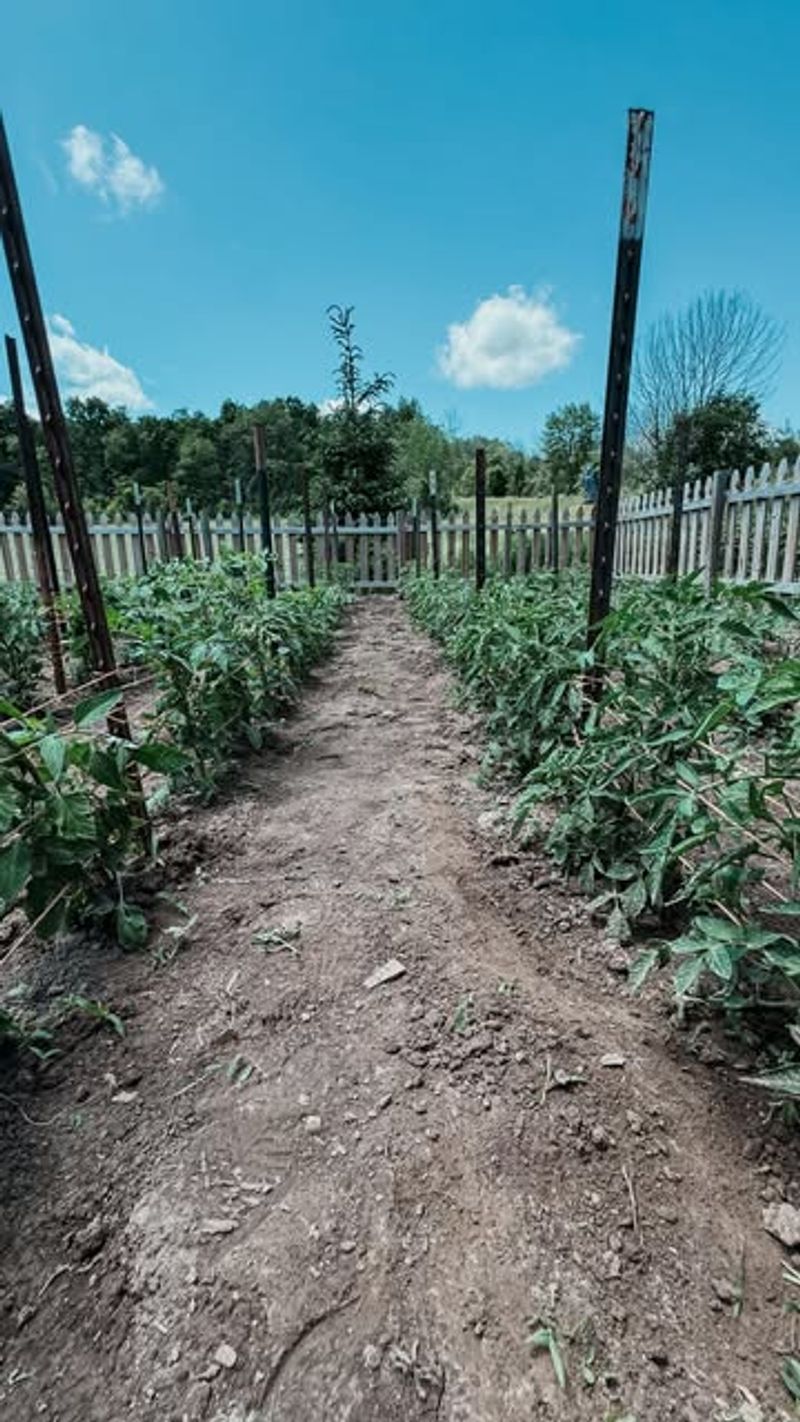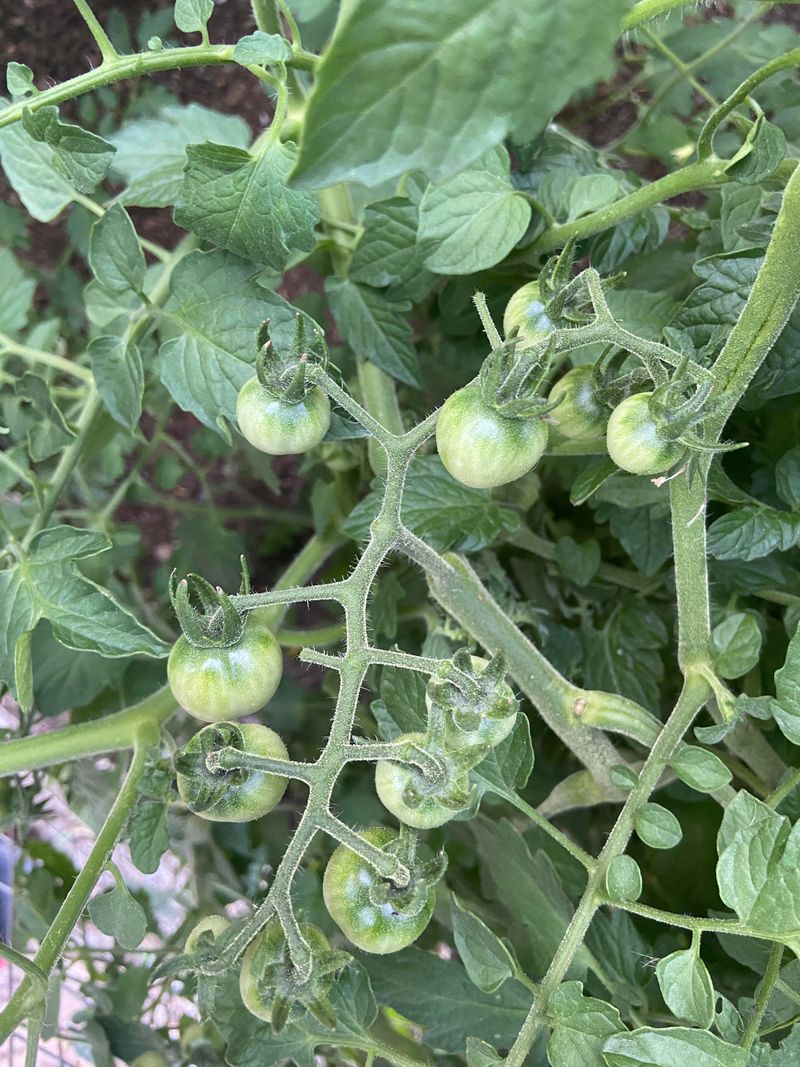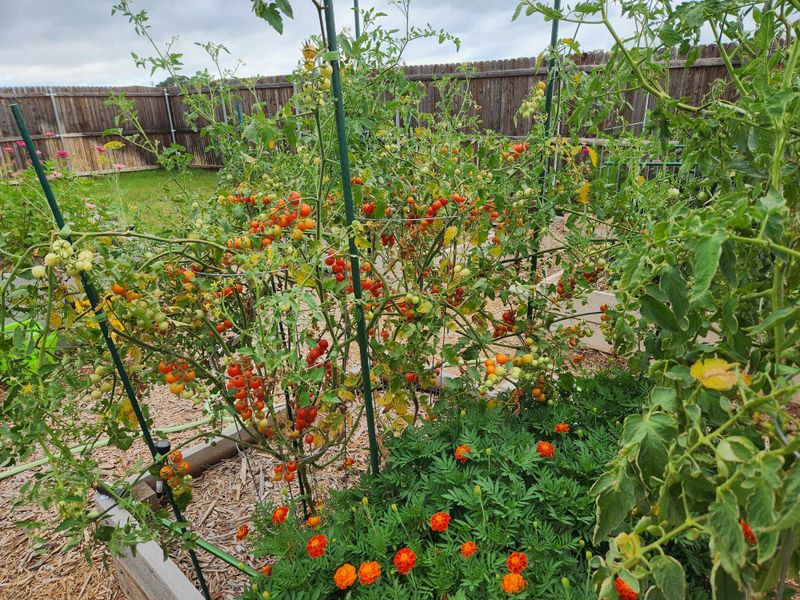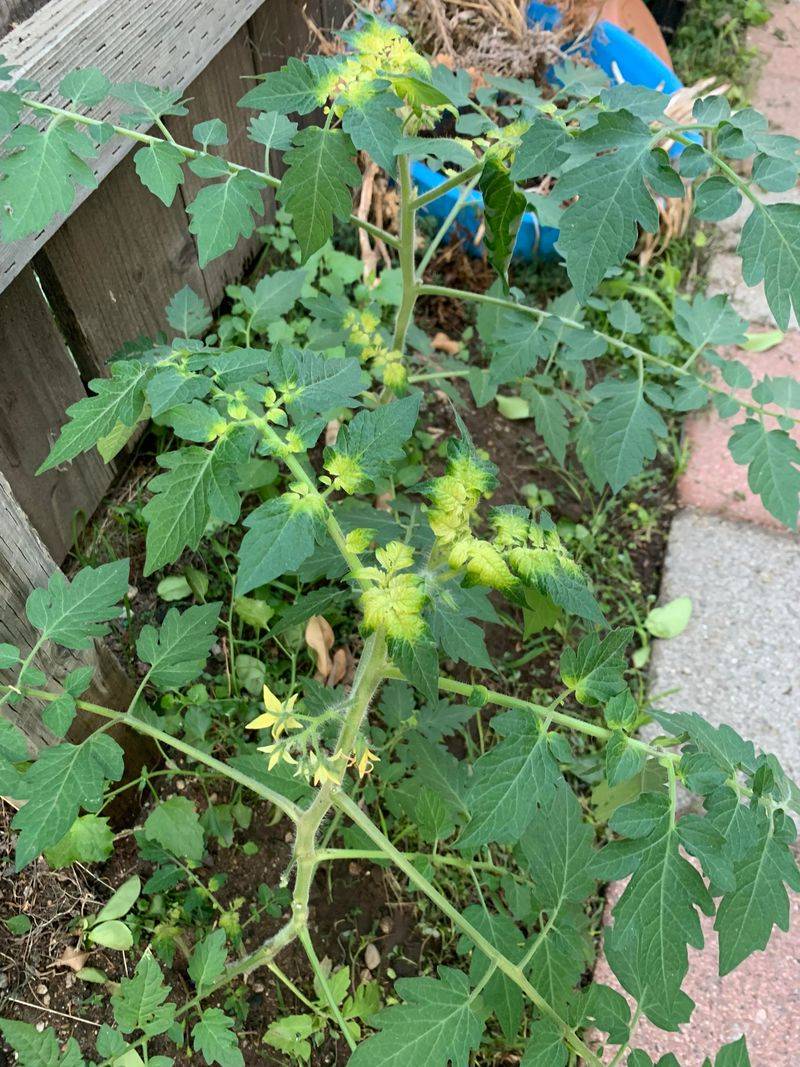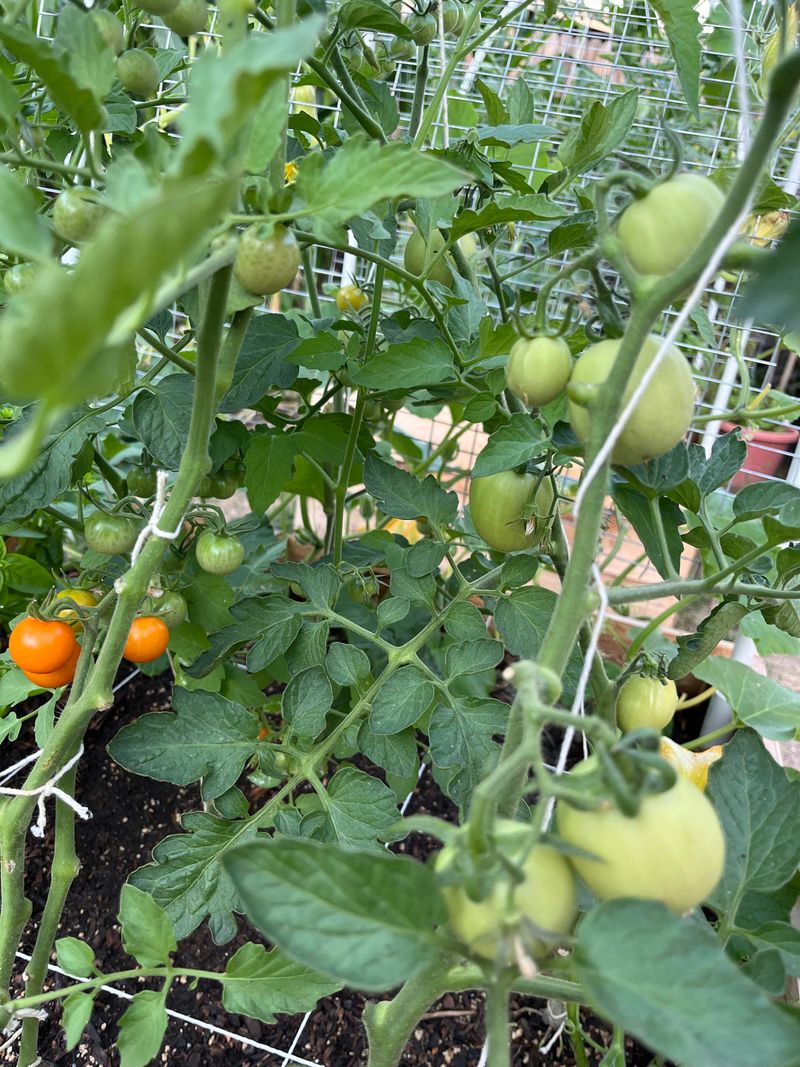Tomatoes can be dramatic in Connecticut gardens and absolutely refuse to thrive in the wrong place. I’ve planted them in a few unlucky spots before and learned the lesson quickly.
They’re picky about light, soil, and airflow. Steering clear of the worst locations gives you a much better harvest.
1. Under Large Shade Trees
Tomato plants are sun worshippers that need at least six to eight hours of direct sunlight daily. When you plant them beneath towering oaks or maples common throughout Connecticut, they simply cannot produce the energy needed for fruit development.
Shade from overhead branches blocks essential light and creates competition for water and nutrients. Your tomatoes will grow tall and leggy as they stretch toward any available sunlight, but they will produce few, if any, tomatoes worth harvesting.
2. Low-Lying Areas That Collect Water
Ever notice how certain spots in your Connecticut yard stay soggy long after a rainstorm? Tomatoes absolutely hate wet feet and will quickly develop root rot in these conditions.
Standing water suffocates roots by preventing oxygen from reaching them. The humid, damp environment also encourages fungal diseases like early blight and late blight, which can devastate your entire crop. Always choose elevated, well-drained locations where water flows away naturally rather than pooling around your plants.
3. Right Next to Black Walnut Trees
Black walnut trees produce a chemical called juglone that acts like poison to tomato plants. Connecticut gardeners who plant anywhere within 50 to 80 feet of these trees often watch their tomatoes wilt and die mysteriously.
The toxin exists in the roots, leaves, and nuts, seeping into the surrounding soil. Symptoms include yellowing leaves, stunted growth, and eventual plant death. If you have black walnuts on your property, choose garden spots far from their root zones.
4. Against North-Facing Walls
North-facing walls receive the least amount of sunlight throughout the day, making them terrible choices for heat-loving tomatoes. Connecticut summers provide just enough warmth for tomatoes when conditions are right, but these shaded spots stay too cool.
Without adequate sun exposure, your plants will struggle to ripen fruit properly. The cooler temperatures also slow growth and make plants more susceptible to disease. Save these areas for shade-tolerant plants like hostas or ferns instead.
5. In Heavy Clay Soil Without Amendment
Connecticut has plenty of clay-heavy soil that becomes rock-hard when dry and sticky when wet. Tomato roots cannot penetrate this dense material effectively, leading to stunted, unhealthy plants.
Clay soil also drains poorly, creating the waterlogged conditions tomatoes despise. Before planting, you must amend clay areas with generous amounts of compost, peat moss, or aged manure. Without proper soil preparation, your tomatoes will struggle from day one, producing disappointing yields despite your best efforts.
6. Too Close to Established Vegetable Gardens
Planting tomatoes right next to peppers, eggplants, or potatoes might seem convenient, but these crops share similar diseases and pests. Connecticut gardeners often unknowingly spread problems like verticillium wilt or Colorado potato beetles by clustering these related plants together.
Proper spacing and crop rotation prevent disease buildup in the soil. Give your tomatoes at least three feet of space from other nightshade family members. Rotating planting locations each year keeps your Connecticut garden healthier and more productive overall.
7. Directly Under Roof Eaves and Gutters
That narrow strip beneath your roof overhang might seem like protected real estate, but it creates multiple problems for tomatoes. During Connecticut rainstorms, water cascades off roofs in concentrated streams that can batter plants and erode soil.
These areas also stay too dry during light rains when the overhang blocks moisture. The inconsistent watering stresses tomato plants, leading to problems like blossom end rot and cracking fruit. Choose spots with natural rainfall patterns for the healthiest, most consistent growth.
8. In Windy, Exposed Hilltops
While hilltops offer excellent drainage and sunlight, constant wind exposure creates serious challenges for tomato plants. Strong Connecticut breezes dry out soil rapidly, requiring frequent watering that many gardeners cannot maintain.
Wind also damages delicate stems and leaves, even breaking branches loaded with developing fruit. The constant movement stresses plants and reduces overall productivity. If you must garden on a slope, choose a mid-slope location with some natural windbreaks, or install sturdy fencing to protect your vulnerable tomato plants.
9. Where Grass Killer Was Recently Applied
Many Connecticut homeowners apply weed killers to their lawns without realizing these chemicals can persist in soil for months. Tomatoes are extremely sensitive to herbicide residues, especially those containing 2,4-D or dicamba.
Even tiny amounts cause leaf curling, twisted growth, and complete crop failure. Wait at least one full growing season after applying lawn chemicals before planting tomatoes in or near treated areas. Better yet, create clear buffer zones between your lawn and vegetable garden to prevent accidental contamination.
10. In Previously Untested Soil Near Old Buildings
Soil near older Connecticut homes and structures built before 1978 may contain lead from old paint chips or other contaminants. Tomatoes and other edible crops can absorb these toxins, making them unsafe to eat.
Before planting near any vintage building, have your soil tested through your local extension office. The small fee provides peace of mind and protects your family’s health. If contamination exists, use raised beds with fresh soil instead of planting directly in questionable ground.

